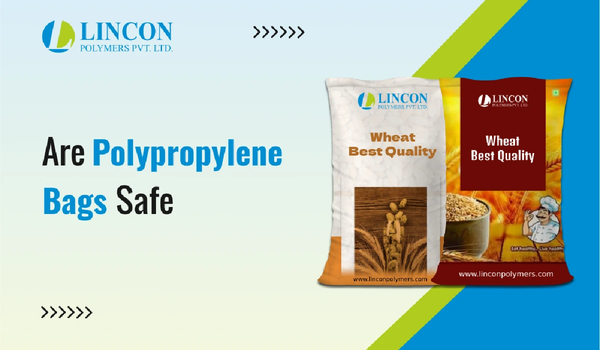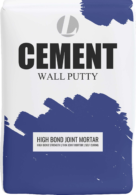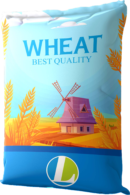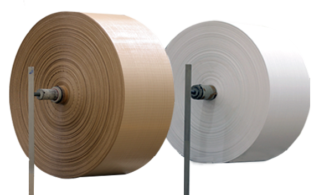
When industrial buyers evaluate packaging solutions, safety certification isn't negotiable. Polypropylene bags have emerged as a preferred choice for food storage bags and industrial packaging across multiple sectors.
But with regulatory scrutiny intensifying and client demands for non-toxic packaging materials growing, decision-makers need evidence-based answers about polypropylene bags safe standards and polypropylene bag safety compliance.
Industrial suppliers like LinconPolymers Pvt Ltd understand how critical these decisions become for procurement teams.
The Safety Science Behind Polypropylene
Polypropylene bags carry FDA approval for direct food contact, a certification that distinguishes them from many competing materials. The molecular structure of polypropylene creates a stable barrier that minimizes interaction with stored contents.
Recent research indicates that some plastic containers contain phthalates ranging from 10% to 60%, while polypropylene maintains its structural integrity without requiring such additives. Regulatory agencies, including the Food and Drug Administration, have evaluated polypropylene and consider it appropriate for use in applications involving direct material contact.
Material Properties That Matter
PP woven bags maintain reliable function in harsh operating conditions:
Authorized by federal regulation 21 CFR 177.1520 for direct food interaction
Structural Stability: Maintains form without plasticizers or phthalates
Heat Tolerance: Works well for uses within set temperature boundaries.
Inert Surface: Non-reactive with acidic, basic, or neutral contents
Understanding the Advantages
The discussion around large food-safe bags extends beyond basic regulatory approval. Smart procurement teams evaluate total performance profiles.
This comprehensive approach typically results in detailed analysis of standard plastic options and their effectiveness under varying circumstances. Here, the benefits of polypropylene bags are regularly highlighted, especially their dependable nature and adaptability in diverse packaging scenarios.
Versus alternatives such as polyethylene and PET, polypropylene frequently wins out when certain performance characteristics matter most. Though all materials serve specific roles, the ongoing preference for polypropylene demonstrates its compatibility with diverse operational demands and packaging specifications.
Performance Characteristics for Industrial Applications
Non-toxic packaging materials must deliver consistent results. Polypropylene offers:
Approved composition recognized by multiple regulatory agencies
Consistent performance across varied storage conditions
Visual clarity for content inspection without package compromise
Dimensional stability that maintains package integrity
Safety Comparison: Material Selection Guidelines
Material Type | FDA Food Contact Status | Additive Requirements | Common Applications | Safety Considerations |
Polypropylene | ✅ Fully Approved | No plasticizers needed | Food storage, medical supplies | BPA-free, phthalate-free |
Polyethylene | ✅ Approved (limited temp) | Minimal additives | General packaging | Good safety profile |
PVC | ⚠️ Restricted use | High plasticizer content | Industrial only | Contains phthalates |
Polystyrene | ❌ Avoid food contact | Requires stabilizers | Non-food applications | Migration concerns |
Based on FDA guidelines and material safety data
Industry Applications Where Material Selection Matters
Pharmaceutical and Medical Industries
Polypropylene bag safety extends to healthcare applications where sterility and non-reactivity are essential. The material's approval for medical device packaging demonstrates its safety profile.
Agricultural and Specialty Storage
From grain handling to specialty products, PP woven bags provide approved containment without introducing unwanted substances into the storage environment.
Understanding Regulatory Frameworks
Global food safety standards continue evolving, with emphasis on materials that minimize potential contamination risks. Key regulatory approvals include:
• FDA Title 21 CFR 177.1520 - Direct food contact applications
• EU Regulation 10/2011 - Food contact materials framework
• Health Canada - Food packaging material standards
• FSSAI India - National food packaging guidelines
Material Selection Considerations
Industrial buyers evaluate multiple factors when selecting packaging materials:
Regulatory Compliance Requirements
Does this material comply with the industry requirements needed for your intended purpose?
Performance Under Conditions
How does the material behave under expected storage and transport conditions?
Supply Chain Verification
Can suppliers provide documentation and traceability for quality assurance?
The Industrial Decision Framework
When evaluating polypropylene bags for industrial applications, consider these factors:
Application Requirements: Match material properties to specific use cases and regulatory needs.
Supplier Qualifications: Verify certifications, quality systems, and documentation capabilities.
Total Cost Analysis: Factor in compliance, replacement frequency, and risk mitigation when comparing options.
To Sum Up
For industrial applications where safety cannot be compromised, polypropylene bags offer a combination of regulatory approval, performance consistency, and established safety profiles. The material's extensive testing and approval by multiple agencies provides the foundation for confident procurement decisions.
When selecting packaging materials, the evidence supports polypropylene as a reliable choice for applications requiring both performance and safety assurance.
FAQs
Q: Are polypropylene bags safe to use?
Yes, polypropylene has extensive regulatory approval and decades of safe use across industries, with FDA recognition for food contact applications.
Q: Are polypropylene bags better than plastic bags?
Polypropylene represents a specific type of plastic engineered for safety applications. Polypropylene bags safe designation comes from regulatory testing and approval processes.
Q: What are the benefits of polypropylene bags?
Key advantages include regulatory pre-approval, structural stability, broad temperature ranges, and compatibility with diverse storage applications.
Q: Is polypropylene of good quality?
Quality depends on manufacturing processes and supplier standards. Established suppliers maintain consistent production specifications and documentation.
Our Products
Providing the most versatile and advanced products under one roof in the Woven Industry







